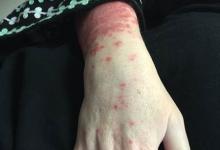EULAR 2025 – Day 4 Report Save
Saturday was the final day of EULAR, and included several lectures, but mostly late breaking abstracts and new EULAR guidelines - notably on Rheumatoid Arthritis and another on Interstitial Lung disease in connective tissue disorders. My favorite presentations included the following:
EULAR Recommendations for the Management of Familial Mediterranean Fever (FMF)
The take-home high points were:
- FMF should be diagnosed and initially treated by an FMF experienced physician.
- Treatment with colchicine should be started as soon as an FMD diagnosis is made.
- Attacks or evidence of subclinical information are indications to increase the dose of colchicine.
- If AA amyloidosis is present, the colchicine dose needs to be maximized and supplemented with a biologic as required.
- FMF patients on colchicine should be monitored with LFTs.
- Impaired renal function increases the risk of colchicine toxicity. Creatinine and CPK should be monitored and doses adjusted accordingly.
- Colchicine should never be given IV.
- Chronic arthritis with FMF may require DMARDs, intraarticular steroids, or biologic therapy.
EULAR Classification Criteria for Hemochromatosis Arthropathy
Session was presented by Professor Patrick Kieley. Hemochromatosis is an autosomal recessive disorder with a prevalence of 1in 300 in Northern Europeans and Celtic people. The diagnosis can be suggested by mutations of the HFT gene - most commonly C282Y (homozygous or heterozygous). A multidisciplinary group developed criteria in a three-phase process. These criteria should be used in patients who have HFE gene mutation, joint pain, or evidence of iron overload. Each of these gets one point with the exception of the first two criteria.
- Joint symptoms before age 50.
- Absence of Dip involvement.
- Iron first present
- MCP (2, 3, 4) involvement
- Hip or ankle surgery
- MCP with joint space narrowing or subchondral cyst
- Ankle joint space narrowing or subchondral cyst
- Hook osteophytes at MCP 2, or 3 or the ankle joint.
With the score of >5/ 11 points these criteria have a 93% specificity in 71% sensitivity in classifying hemochromatosis arthropathy.
Late breaker - POETYK PsA-1 study (LB0001)
- Deucravacitinib was studied in a phase 3 trial of 670 PsA patients with active disease (> 3 joints) in a 16-week study of Deucravacitinib vs. placebo. Overall patients were followed out to one year. Patients were enriched for those who would have x-ray progression with an elevated CRP or evidence of prior erosion. The primary endpoint was the ACR20 - Deucravacitinib 54% versus 34% on placebo. The ACR50 was 25% and the ACR70 was 11.6% - all of these were significant compared to placebo. Deucravacitinib was also superior at functional outcomes, PASI75 (52% versus 7%), MDA (19% versus 10%) and change in DAS-CRP (-1.3 versus -0.8). While the pre-specified analysis showed no significant difference between groups as far as x-ray change (0.78 versus 0.64), Dr. van der Heidje explained that in the correct post-hoc, nonparametric analysis, Deucravacitinib was significantly better than placebo in Xray protection (0.41 versus 0.50) at week 16. Overall, this was a highly positive trial for Deucravacitinib in psoriatic arthritis.











If you are a health practitioner, you may Login/Register to comment.
Due to the nature of these comment forums, only health practitioners are allowed to comment at this time.